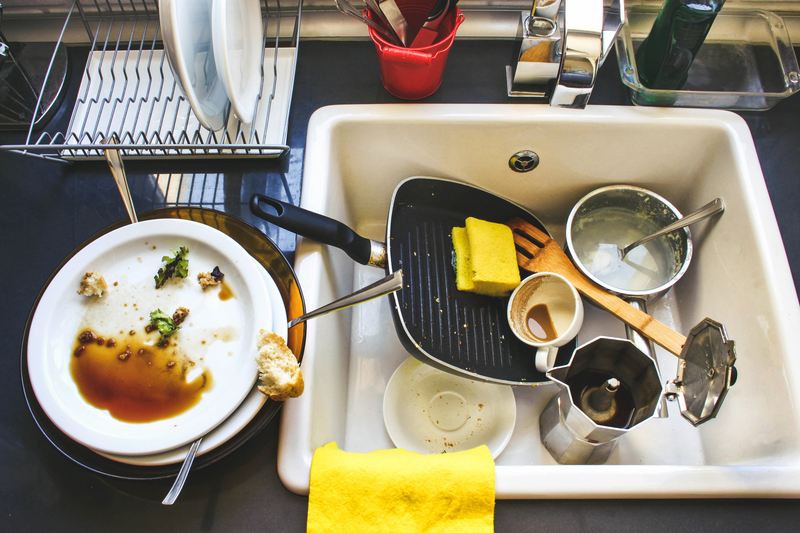Moving a Piano Made Easy -- Expert Tips and Why You Shouldn't Go Solo
Moving a piano is one of those tasks that appears straightforward but quickly turns into a tremendous challenge. Whether you're relocating a petite upright, a majestic concert grand, or a family heirloom, shifting a piano requires more than brute strength. If you're researching how to move a piano or considering professional piano movers, this comprehensive guide will steer you safely through the process. Learn why attempting this complex task alone is risky, and discover expert tips to make piano relocation a smooth and secure experience.

Understanding the Dynamics of Piano Moving
Why a Piano Is Not Just Another Piece of Furniture
Before grabbing your hand truck and calling friends for help, it's crucial to understand what makes moving a piano unique. Unlike standard furniture, pianos are:
- Extremely Heavy: Grand pianos can weigh up to 1,400 pounds, while uprights typically range from 300 to 500 pounds.
- Delicate and Intricately Constructed: Each piano comprises thousands of moving parts--strings, hammers, keys--that are vulnerable to misalignment and damage.
- Awkwardly Shaped: The weight distribution is unbalanced, making them difficult to lift, turn, or secure safely.
- Valuable (Sentimentally and Financially): Many pianos are irreplaceable family treasures or significant investments.
Risks of DIY Piano Moving
Attempting a piano move on your own might seem cost-effective, but it introduces a host of risks:
- Physical Injuries: The risk of pulled muscles, crushed fingers, and strained backs is very high.
- Property Damage: Scratched floors, broken steps, gouged walls, and damaged doorways are all too common.
- Piano Damage: Even minor bumps can misalign internal components, jeopardizing the piano's sound and value.
- Insurance Issues: Most homeowner policies don't cover damage caused by unprofessional movers.
Simply put: Moving a piano is never a one-person job.
Why You Should Avoid Moving a Piano Alone
1. Safety First - Protect Yourself and Others
Safety is the foremost concern when considering DIY piano moving. Pianos are treacherously heavy and have uneven weight distribution, meaning a sudden shift can result in crushing injuries. Without proper lifting techniques, padding, and securing equipment, you could harm yourself, helpers, or pets in your home. The consequences range from sprains and fractures to life-changing injuries.
2. Avoid Expensive Damage
Pianos are remarkable in both construction and fragility. Even minor mishandling can:
- Bend pedals or snap delicate keys
- Dislodge hammers or strings, affecting the sound
- Scratch or crack the delicate finish
- Wreck hardwood floors, carpets, or stairs during transport
Repairing a damaged piano can cost more than hiring a professional moving service in the first place.
3. Hidden Complexities: Stairs, Narrow Hallways, and Doorframes
Every home presents unique piano moving challenges. Tight corners, narrow corridors, and stairs are tricky even for trained professionals. Maneuvering an upright or grand piano through such spaces--without specialized equipment or know-how--is asking for disaster.
4. Lack of Professional Equipment and Experience
Professional piano movers invest in custom dollies, heavy-duty straps, ramps, and padding. They use years of experience to navigate obstacles, balance pianos correctly, and ensure safe transit. Attempting to move a piano without such equipment or training puts both the instrument and your property at risk.
Expert Tips for Making Piano Moving Easy and Stress-Free
1. Assess and Plan Before You Move
Start with a meticulous assessment:
- Measure the piano and doorways: Ensure there's enough space at every turn.
- Map the route: Identify stairs, corners, and obstacles. Remove rugs, cords, or furniture along the way.
- Check the weight and balance: Know your piano's center of gravity for safety.
2. Gather the Right Equipment
At a minimum, you'll need:
- Piano dollies/skid boards: Designed for upright or grand pianos, these distribute weight safely.
- Heavy-duty straps: Secure the piano to the dolly and prevent tipping or sliding.
- Padded blankets: Wrap the piano to prevent scratches and gouges.
- Ramps: Essential for stairs or uneven surfaces.
- Sliders and gloves: Protect both your piano and your hands during the move.
Professional piano movers will already have this gear--another reason to consider hiring them rather than risking a DIY move.
3. Secure the Instrument
Properly prepare the piano for moving:
- Close and lock the keyboard lid: Secure it so keys and hammers aren't exposed during transit.
- Remove detachable parts: For grand pianos, remove the legs, lyre, and pedals as needed. Carefully label and wrap each part.
- Wrap the entire body: Use thick moving blankets, especially around corners and edges.
4. Team Up -- The Right Way
Never attempt to move a piano solo. Even with helpers, there should be at least 3-5 physically capable adults, depending on the piano's size and the complexity of the move. Assign clear roles to each person and use a spotter for stairs and tight turns.
5. Navigating Stairs and Narrow Passages
Stairs are the most dangerous part of any piano move. Here are expert strategies:
- Use a ramp or skid board: For short flights of stairs, a ramp distributes weight and minimizes lifting.
- Keep the piano upright: Tilting can cause immediate internal damage.
- Move slowly and communicate: Each person should know when to push, pull, or hold still.
- Assign a spotter: Place a guide at both the front and rear for balance and direction.
Many accidents happen when speed overtakes caution. Patience pays off!
6. Secure the Piano in the Vehicle
When loading the piano for transport:
- Ensure the moving truck has a liftgate or ramp: Never attempt to heave a piano into a truck manually.
- Fasten with heavy-duty straps: Immobilize the piano to prevent shifting during transit.
- Avoid stacking: Never place items on top of the piano. Extra weight can crack the finish or soundboard.
7. Reassembly and Tuning
After arrival:
- Unwrap and reattach parts carefully: For grand pianos, reinstall legs and pedals gently.
- Allow the piano to acclimatize: Give it 24-48 hours in its new location before tuning. Temperature and humidity changes can affect tuning stability.
- Schedule a professional tuning: Even a carefully moved piano may go out of tune due to jostling and environmental changes.
Choosing Professional Piano Movers: What to Look For
Enlisting the help of professional movers is the safest and most efficient choice when relocating a piano. Here's what distinguishes an expert piano moving company:
- Specialized Training: Certified piano movers understand the anatomy of different piano types and how to disassemble, wrap, and transport them securely.
- Custom Equipment: From dollies built for pianos to hydraulic lifts, pros have the right gear for every scenario.
- Experience with Obstacles: Stairs, tight corners, and awkward access points present no problem to seasoned experts.
- Comprehensive Insurance: Should any accident occur, professional movers are fully insured--protecting your investment.
Ask potential moving companies about their experience with your specific piano type, their insurance coverage, and request references or reviews from previous piano moves.

Frequently Asked Questions about Moving a Piano
Q: Can I move a piano a short distance by myself?
A: Even a short move within the same room poses risks. The weight and balance can cause injury or internal piano damage. Always use at least two helpers and proper equipment, or consult piano relocation specialists.
Q: What if my piano won't fit through the doorway?
A: Professional piano movers can disassemble parts of the piano (such as the legs of a grand or the top of an upright) to fit tight spaces, without endangering the instrument.
Q: How much does it cost to hire professional piano movers?
A: Costs vary based on size, distance, and complexity. On average, local upright piano moves range from $150 to $400; grand pianos or long distances can cost $400-$1,000 or more. Consider the cost as insurance against far greater repair or replacement expenses!
Q: Do I need to tune my piano after moving it?
A: Yes--wait at least 24 hours for the piano to adjust to its new environment, then call a certified technician to restore its perfect sound.
Q: Should I move a piano upstairs?
A: Moving pianos upstairs is extremely dangerous and should always be handled by professional piano movers with the right equipment.
Conclusion: The Smart Way to Move a Piano
Moving a piano is a task that requires planning, teamwork, equipment, and great care. Going solo is never worth the risk: injuries, property damage, and harm to your treasured instrument are all-too-common results of underestimating the job. By understanding the unique complexities of piano moving and following expert tips--ideally by hiring trained piano relocation professionals--you ensure your piano arrives safely and sounds its best in your new home.
If you value your piano's legacy, don't go it alone. Let the experts turn a daunting move into a smooth, stress-free experience--so you can keep making music for years to come.



